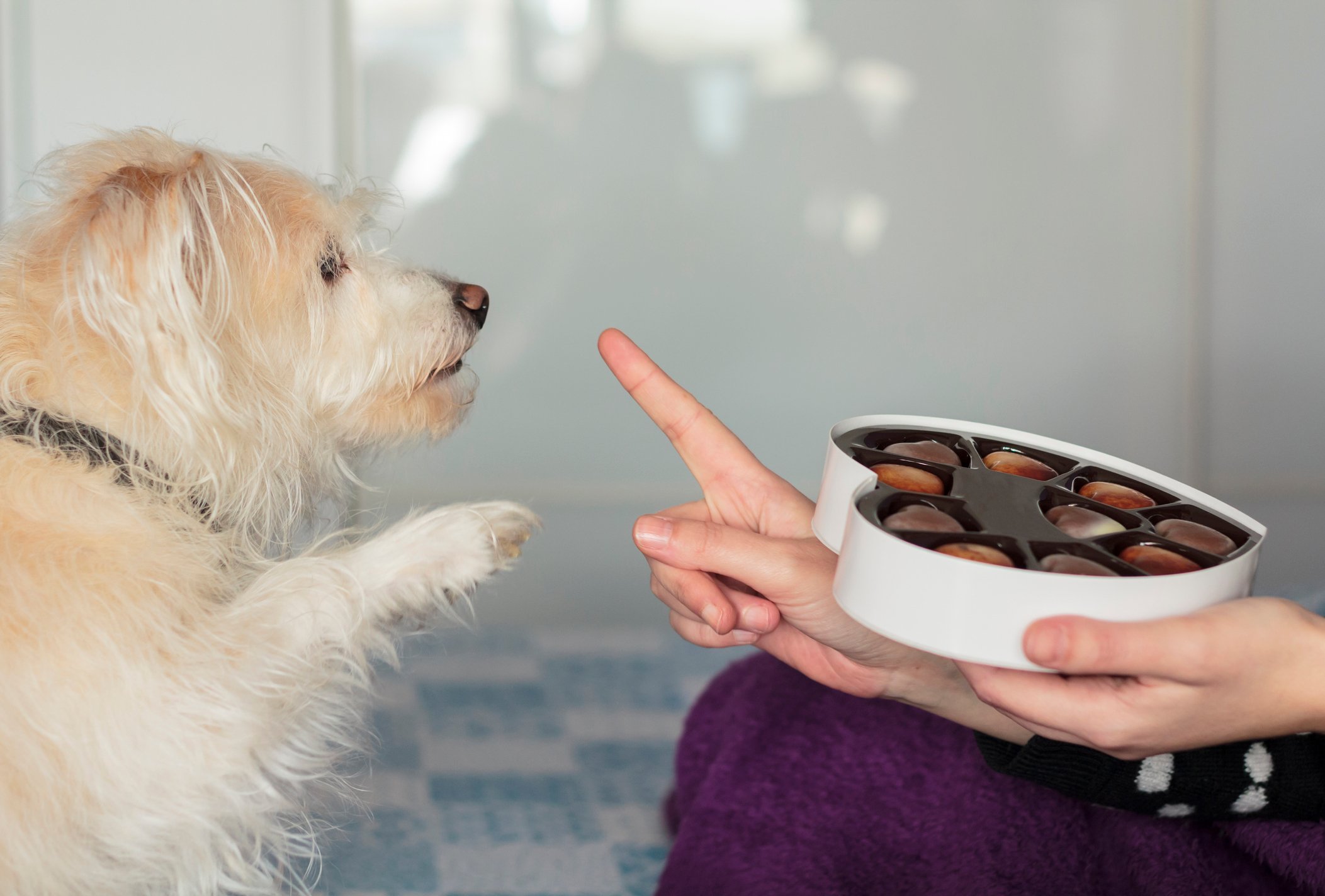
When Can Sweet Snacks Be Poisonous to Your Dog?
Pet parents are all too familiar with puppy-dog eyes. Your pup might come sauntering over, hoping to snag a bite of that chocolate chip cookie or a piece of candy you’re snacking on. For their own safety, it’s important that you don’t give in to their begging! Many sweet snacks contain ingredients that are highly toxic to your furry friend.
Here are the most poisonous sweet snacks that should stay on your top shelf, away from your pup.
Xylitol in sugar-free goodies
Xylitol is a popular substitute for sugar. It tastes just as sweet as sucrose, yet it contains a fraction of the calories. Because of this, xylitol has replaced sugar in many sugar-free sweet treats like candy, gum, breath mints, pudding and other desserts. The compound is also frequently added to health products including toothpaste, vitamins and cough syrup for children.

As xylitol has risen in popularity, so has the incidence of xylitol toxicity in dogs. A small amount is all it takes to land your pooch in the hospital. Dogs can become poisoned from as little as 50 milligrams of xylitol. Sugar-free gum is the most common food that leads to xylitol toxicity, and just two sticks of gum can make your dog feel extremely sick.
Sugar-free treats are poisonous to dogs because xylitol is rapidly absorbed into the bloodstream. This causes the pancreas to release a surge of insulin, dramatically reducing the dog’s blood sugar levels. Dangerously low blood sugar leads to a condition called hypoglycemia which, if left untreated, can lead to liver failure and death.
Dogs usually experience xylitol poisoning instantly. Once your dog eats a sugar-free treat, symptoms of hypoglycemia can set in after just 10 minutes. Signs that your dog has been poisoned with xylitol include vomiting, lethargy, poor coordination and muscle tremors. Severe cases of hypoglycemia lead to seizures and a coma, all of which can happen in less than an hour.
Owners who suspect their dogs ingested xylitol should visit an emergency clinic immediately, regardless of whether or not symptoms are present. Rapid treatment leads to a better prognosis and can save your dog’s life. Don’t wait to see how bad xylitol toxicity can get!
Why chocolate is bad for dogs
Every pet parent knows they’re not supposed to feed chocolate to dogs. However, few have learned the science behind why even small amounts can poison their furry companions. Chocolate contains theobromine, a compound that’s hard to metabolize in dogs. Theobromine builds up in the digestive system, which quickly results in toxicity.
The severity of chocolate poisoning depends on your dog’s weight, along with the type and amount of chocolate they ate. Dark and baker’s chocolate contain the highest concentrations of theobromine, making them the most toxic to dogs. Milk chocolate is less of a threat, allowing dogs to tolerate more before toxicity kicks in.

The symptoms of chocolate poisoning are similar to those associated with xylitol toxicity. Signs to watch out for include vomiting, diarrhea, seizures and tremors. Chocolate poisoning is usually indicated by extremely high levels of excitement and a rapid or irregular heartbeat. Symptoms can take several hours to set in but last for days. As with xylitol toxicity, you should take your dog to an emergency clinic the second you realize they’ve ingested chocolate, even if they seem fine.
What you can do to help
If your furry friend ate some chocolate or sugar-free treats, the first thing you should do is call your nearest emergency vet clinic or the pet poison hotline. They’ll ask a few questions and instruct you on what to do next. If possible, keep the food packaging so your vet will know exactly how much chocolate or xylitol was ingested.
Bring your dog to the emergency clinic within an hour after ingesting the toxic food. Your vet may induce vomiting to expel the xylitol or theobromine before it gets absorbed into the bloodstream. Never attempt to induce vomiting at home—the process must be done correctly by a professional, otherwise you risk making the toxicity worse.
In severe cases, chocolate or xylitol poisoning will require an overnight stay at the veterinary hospital. Doctors will administer anti-nausea medication and intravenous fluids to rehydrate your dog. Xylitol toxicity, in particular, calls for sucrose supplementation so your dog’s blood sugar levels can return to normal.
If your pup has eaten something they shouldn’t, don’t wait for symptoms to show up. Poisoning in dogs can go from bad to worse really fast. Call the vet right away, even if your furry friend ingested only trace amounts of chocolate or sugar-free foods. It’s best to err on the side of caution than risk losing your beloved canine to a candy bar!


